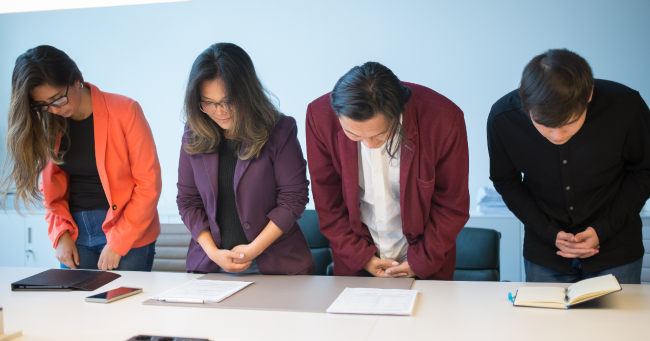Ojigi (Bowing)
“Ojigi” refers to bowing in English. In Japanese culture, people use ojigi to greet each other as a sign of respect. But there are various types of bowing. For example, the most common type of bowing is called “ritsurei”, which refers to a bow performed while standing. There’s also “zarei”, a style of bowing done while seated. This particular bow is mostly used in particular situations like at a Japanese tea ceremony. The meaning behind ritsurei in particular can vary depending on what degree you tilt your upper body. For example, if you want to give someone a light greeting, you’d use an “eshaku”, a slight tilt of 15 degrees from the top. Or if you want to bow to a superior or after an interview, you’d use a “keirei”. And lastly, there is a “saikeirei”, which is a 45-degree tilt used to apologize. It isn’t necessarily better to bow at a steeper angle, so it’s important to bow at an appropriate angle.
When bowing, there are many things to pay attention to such as your hand position, how fast you’re bowing, and your overall posture. There aren’t very many Japanese people who can bow perfectly. But the most important part of bowing is smiling. As long as you’re smiling, people will still accept the sentiment.
sign up for the Japanese-Online Newsletter
__..-・**・-..__..-・**・-.._ あいうえお かきくけこ さしすせそ たちつてと なにぬねの はひふへほ まみむめも やいゆえよ らりるれろ わゐうゑを ん __..-・**・-..__..-・**・-.._
#JapaneseOnline #LearningJapanese #FreeJapaneseLessons #JapaneseVideoLearning #JapaneseAnime #Anime #JapaneseFood #Bloguru

